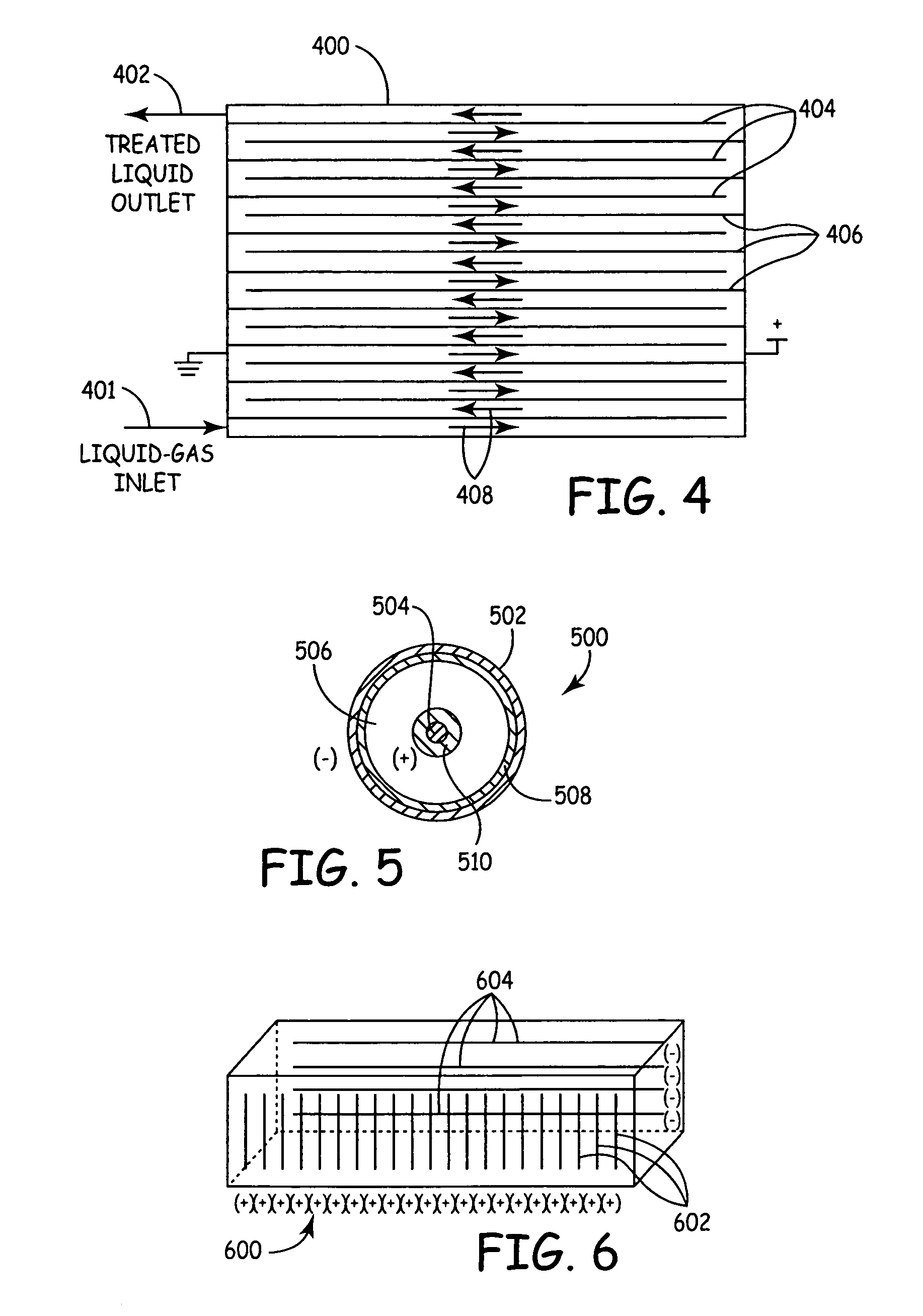Non-thermal disinfection of biological fluids using non-thermal plasma
- Summary
- Abstract
- Description
- Claims
- Application Information
AI Technical Summary
Benefits of technology
Problems solved by technology
Method used
Image
Examples
Embodiment Construction
[0062]FIG. 1 is a diagrammatic view of a “silent type”, volume discharge non-thermal plasma reactor 100, which can be used for pasteurizing and / or at least partially sterilizing or disinfecting living-mammal-instillable liquids, such as biological fluids, to kill live pathogens living in the liquids. Non-thermal plasma reactor 100 includes a liquid inlet 102, a liquid outlet. 104, a reaction volume 106 between liquid inlet 102 and liquid outlet 104, electrodes 108 and 110, and dielectric barriers 112 and 114. Flow path 116 indicates the liquid flow path from inlet 102 to outlet 104, through reaction volume 106. Each of the electrodes 108 and 110 is physically and electrically isolated from the liquid in flow path 112 by a respective one of the dielectric barriers 112 and 114.
[0063]Dielectric barriers 112 and 114 are separated from one another by a gap, which defines the effective width of reaction volume 106. Dielectric barriers 112 and 114 can include Teflon, glass, ceramic or epox...
PUM
 Login to View More
Login to View More Abstract
Description
Claims
Application Information
 Login to View More
Login to View More - R&D
- Intellectual Property
- Life Sciences
- Materials
- Tech Scout
- Unparalleled Data Quality
- Higher Quality Content
- 60% Fewer Hallucinations
Browse by: Latest US Patents, China's latest patents, Technical Efficacy Thesaurus, Application Domain, Technology Topic, Popular Technical Reports.
© 2025 PatSnap. All rights reserved.Legal|Privacy policy|Modern Slavery Act Transparency Statement|Sitemap|About US| Contact US: help@patsnap.com



